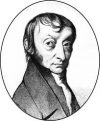TOK connections in atomic structure. Explore the interconnections between atomic structure and Theory of Knowledge in this insightful blog post! Get a better understanding of both revolutionary topics with this comprehensive guide.
From atoms to the Theory of Knowledge, this blog post will reveal the remarkable interrelationships between them. Discover how the structure of atoms informs the gathering and application of knowledge, and vice versa. Learn about how each field can enhance our understanding of the other in this comprehensive guide!
Introduction to Atomic Structure.
The structure of atoms plays a formative role in the gathering and application of knowledge. Atomic structure is based on the arrangement of electrons, protons, and neutrons in an atom’s nucleus. This configuration determines how each atom interacts with its environment and offers insight into its behavior. Understanding how different elements interact with each other can help scientists make predictions about their behavior and gain a greater understanding of their dynamics.
Overview of the Theory of Knowledge.
The theory of knowledge is the philosophical study of the nature, methods, limitations, and validity of knowledge. It considers individual pieces of evidence and facts to be studied in light of different perspectives, with assumptions being challenged and decisions reached by careful investigation and logical reasoning. The goal of the theory is to provide a comprehensive understanding of how individuals approach understanding truths or validating previous claims as related to their social environment. It investigates questions such as “What counts as knowledge?” “How can we tell true beliefs from false ones?” and “What is the value or purpose of knowledge?”
Compare & Contrast Atomic Structure and Theory of Knowledge.
Atomic structure and Theory of Knowledge both offer unique perspectives when it comes to understanding the world around us. Atoms are composed of smaller components that interact with each other, allowing for the creation of chemical bonds and materials. On the other hand, Theory of Knowledge looks at individual pieces of evidence and facts to gain a more comprehensive understanding of how individuals approach understanding truths or validating previous claims as related to their social environment. By exploring both topics in depth, we can better understand their connections and potential implications.
Historical Connection between Atomic Structure & Theory of Knowledge.
The historical connection between atomic structure and Theory of Knowledge can be best understood when we look to the work of key scientists throughout history. For example, Democritus, a pre-Socratic philosopher, was the first to formally propose an “atomic philosophy” which suggested that all matter is composed of small particles or atoms that exist independently of each other. This proposed atomistic understanding was later part of John Locke’s framework for his Theory of Knowledge, which argued that all knowledge is based on associating experiences with ideas.
Applications and Relevance Today.
Today, the connections between atomic structure and Theory of Knowledge are as relevant as ever. From a scientific perspective, understanding how atomistic theories work has enabled scientists to explore the depths of our universe with an unprecedented level of accuracy. In addition, some of Locke’s foundational tenets remain integral to epistemology and understanding knowledge formation in the modern day. Finally, embracing the concept of atomism allows us to think more critically about the power of individual action across all levels of society.
Discover how our understanding of the atom has changed over time and the implications for our current understanding of the world.
Representation: How atomic structure is represented impacts our understanding. Consider limitations.
Language: Language helps describe atomic structure, but can also be a barrier.
Empiricism: Evidence and experimentation inform our understanding of atomic structure, but consider limitations.
Interdisciplinary: Atomic structure connects to other areas of knowledge, but also brings new perspectives and limitations.
Few TOK questions
What impact does the way we represent atomic structure have on our understanding of atoms? Are there any limitations to this representation?
How does language help us understand and talk about atomic structure? Are there any limitations to this method of communication?
How does using evidence and experimentation help us understand atomic structure? Are there any limitations to relying on empirical evidence?
How does connecting atomic structure to other areas of knowledge deepen our understanding? Are there any new perspectives or limitations introduced by these connections?
By exploring the relationship between the Theory of Knowledge (TOK) and atomic structure, can we gain a more critical and nuanced understanding of the world?
Please comment and share TOK connections in atomic structure

